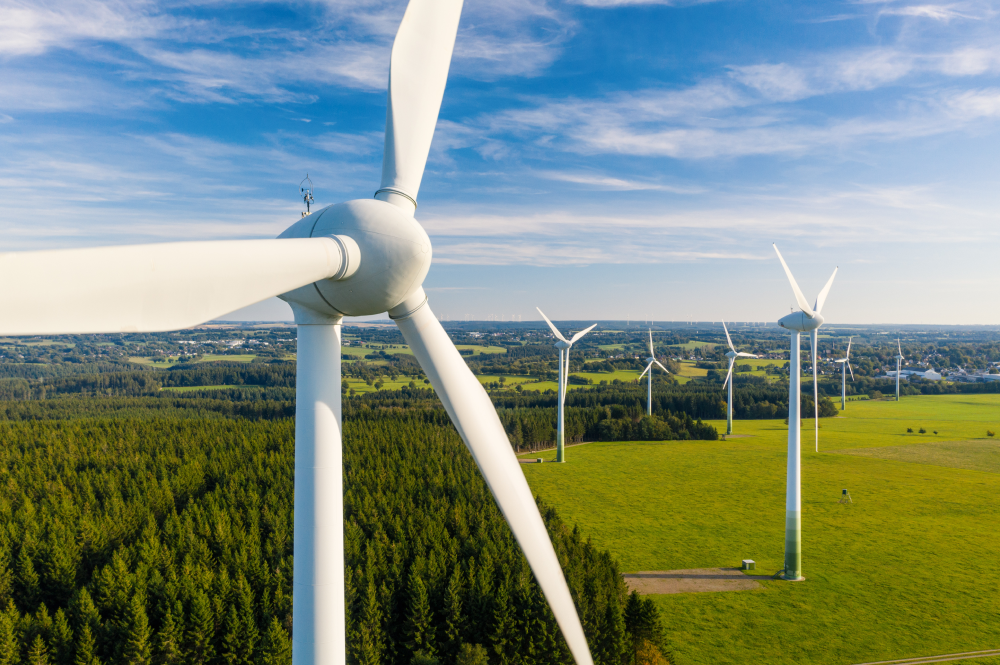Wind Farm Development Success

Wind turbines and wind farms aren’t a new concept, they date as far back to 1887, but they are an increasingly popular option for renewable energy. Over 80% of people in the UK now support wind energy.1
The Rising Power of Wind Farms
In 2021, wind energy contributed to 21.8% of the UK’s energy use, but by 2022 this had increased to 26.8%, and continues to rise.2
Wind turbines work using aerodynamic force – wind flows against the fiberglass blade, meaning air pressure on the other side decreases, causing the rotor to spin. This rotor connects to a generator, creating electricity. Wind farms are made up of numerous (sometimes hundreds) of wind turbines, with electricity flowing from each turbine through to a substation, where it then transfers via high voltages to the grid.
Wind Farm Renewables
Wind is caused by the uneven heating of the Earth’s surface, meaning we will never run out of it. Paired with being one of the cheaper alternatives for creating electricity, and not requiring water for cooling unlike other energy options, wind power is an ideal option for renewable energy.
Additionally, wind power creates smaller amounts of carbon emissions compared to other energy sources – Averaging 11g of CO2/kWh, compared to 44g solar power and 1,000g for coal.3
Portuguese Wind Farms
Wind turbines have been increasing in popularity in the UK, but it doesn’t stop there. Portugal has gained approval to build their largest wind farm in early 2025, the biggest hybrid clean energy scheme in the country.
The project, which will be able to support 128,000 homes, has a capacity of 274 MWh. The project, named Tâmega Eólico, will utilise the same grid as the Tâmega pumped-storage hydro complex – the largest hydroelectric project in Europe – in addition to the same facilities. This has been done with the intent to minimise environmental impacts.
By using the same facilities, the project will minimise effects on the environment – such as disturbance to habitats – whilst the leaders of the project have processes in place to support the ecosystems in the area, with plans to plant more fruit trees and restore natural habitats such as ponds.
The expansiveness of this project shows the potential of renewable energy in meeting our needs in a sustainable way, whilst propelling renewable wind and energy projects further.
Outlook
Wind turbines have been paramount in reducing the UK’s greenhouse gas emissions, and it’s hoped that the same can be said for the rest of the world, with large projects such as the Tâmega Eólico on the horizon, it seems more than likely that wind power will could continue in popularity.
However, one factor that always needs to be taken into consideration when it comes to wind farms, is the environmental impacts that they may cause on local habitats and the environment, with project managers needing to put processes in place to limit any negative effects that they may have.
3 Forbes


